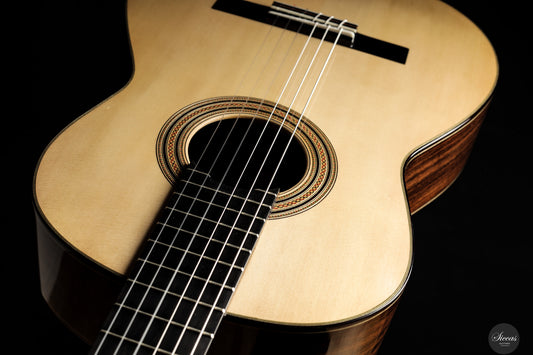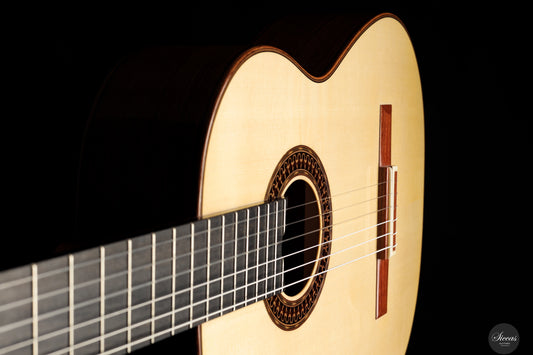Edgar Mönch - 1953
Edgar Mönch - 1953
Overview
Overview
About the luthier
Edgar Mönch, born on October 29, 1907, in Leipzig, came from a family deeply rooted in music. His mother, a Russian pianist, and his father, a violinist and kapellmeister, nurtured his artistic upbringing. Mönch spent his early years in Russia, where he attended school before pursuing engineering at the Technical University of Danzig (now Gdańsk, Poland). He later worked as a technical interpreter at the Stoka Plant in Prague, where he also studied violin at the conservatory. His introduction to guitar making came during World War II, while imprisoned in an English camp as a German prisoner of war. There, he learned the craft from a violin maker from Breslau (now Wrocław, Poland), marking the beginning of his lifelong passion. Upon his release in 1947, Mönch fully committed to guitar making, refining his skills through studies in Spain with renowned luthier Marcelo Barbero in Madrid.
Mönch’s extraordinary craftsmanship and perfectionism earned him global recognition, often being compared to a “Stradivari of Guitar Building.” His dedication to his work was matched by his eagerness to pass on his knowledge, and his workshop produced notable luthiers, including John Larrivée, Kolya Panhuyzen, Ken Bowen, and Joseph Kurek. Revered for his meticulous attention to detail, Mönch crafted guitars cherished by legendary musicians such as Andrés Segovia, Julian Bream, John Williams, and Vicente Gómez. His contributions to classical guitar construction remain influential long after his passing on February 16, 1977, just two months after the loss of his son. Today, Mönch guitars are celebrated worldwide for their exceptional quality and enduring legacy.
About the guitar
This guitar, crafted in 1953 in Munich, is one of the most remarkable models built by Edgar Mönch. It features a spruce top with stunning grain patterns, paired with light-colored Indian rosewood back and sides, and enhanced by matching light-colored purflings. The original Landstorfer tuners, inlaid into the headstock, reflect the meticulous attention to detail of the craftsman. Aesthetic elements such as these showcase Mönch’s commitment to blending beauty with functionality, creating a visually striking instrument that remains timeless.
In terms of sound, this guitar truly excels. Its tone is well-rounded and exceptionally balanced, with remarkable voice separation. The vibratos carry an airy quality that produces pleasing overtones, while the basses are well-defined and resonant. Combined with excellent playability, it offers a rewarding experience for any guitarist. As a cherished, pre-owned instrument, it exhibits several signs of wear that do not compromise its structural integrity. Three professionally repaired cracks have been stabilized with diamond cleats: one on the top behind the bridge, one at the interface between the top and the right side of the fretboard, and one on the bottom side. This guitar stands as both a historical treasure and an exceptional instrument for performance.
| Luthier: | Edgar Mönch |
| Construction year: | 1953 |
| Construction type: | Traditional |
| Top: | Spruce |
| Back and sides: | Indian rosewood |
| Finish: | Lacquer |
| Scale: | 650 mm |
| Nut: | 51 mm |
| Weight: | 1470 grams |
| Tuners: | Landstorfer |
| Strings: | Knobloch - EDC 34.0 |
| Condition: | Very good |
| Case: | Hiscox Pro II “Siccas Edition” |


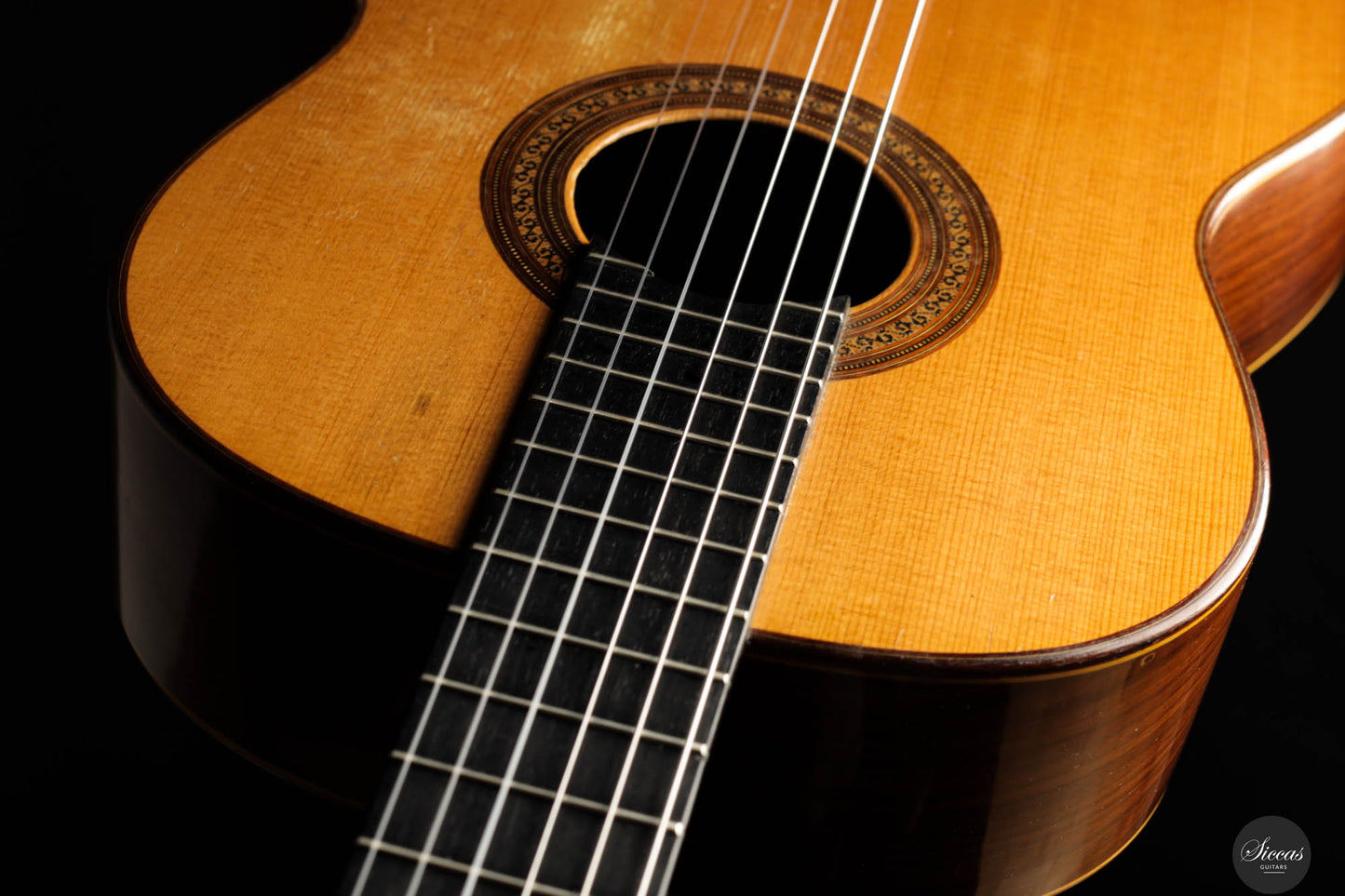




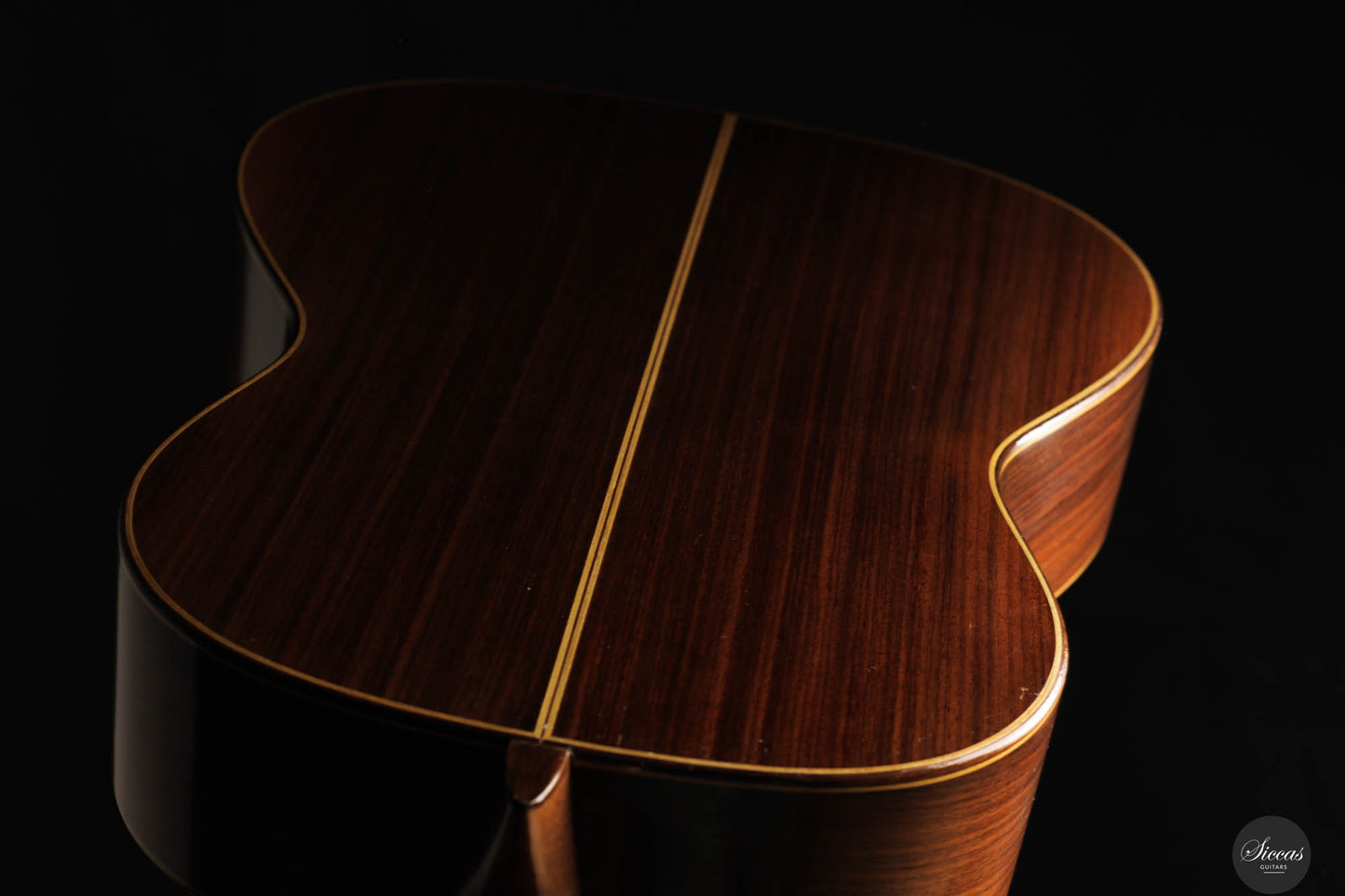



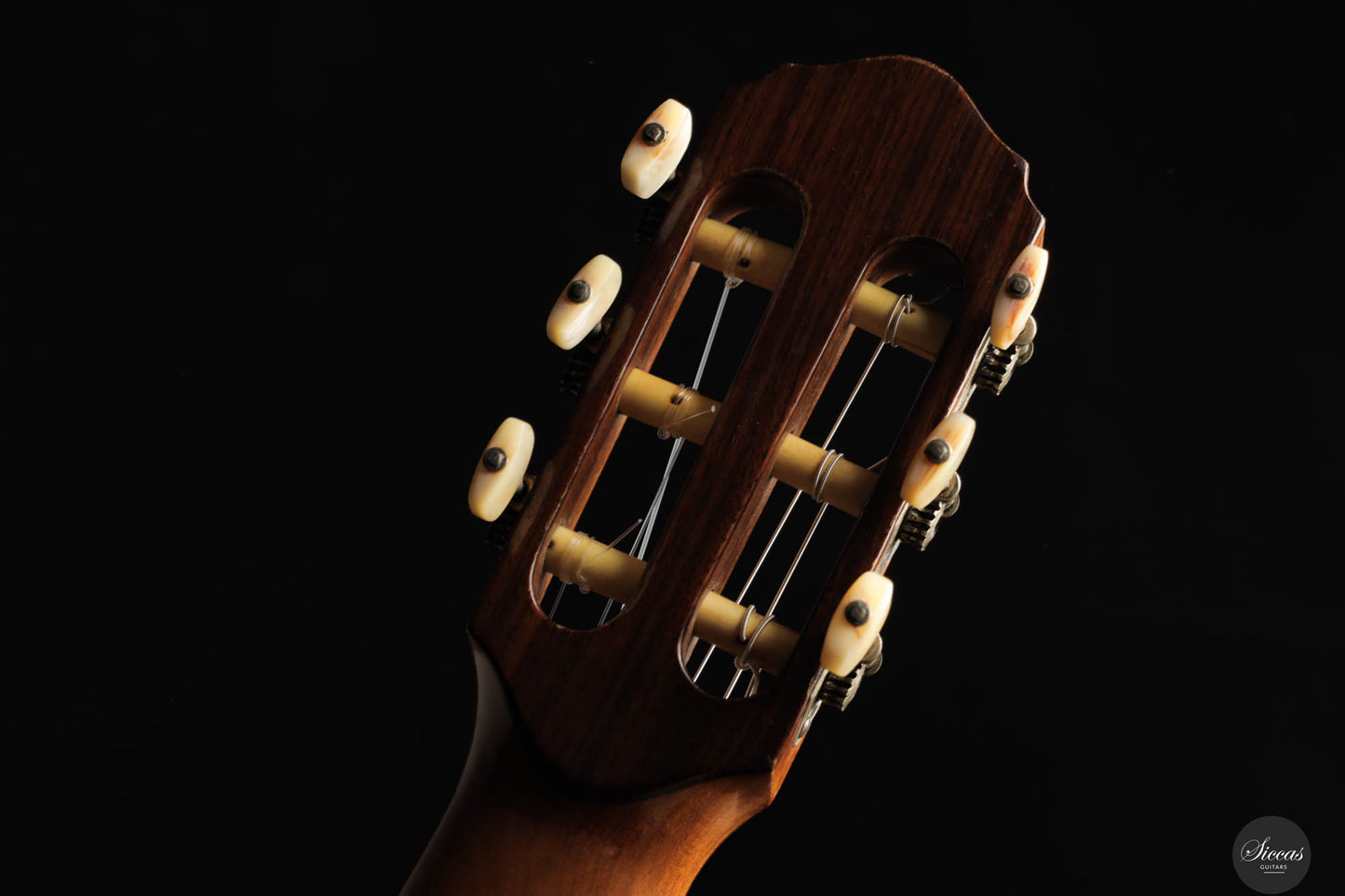
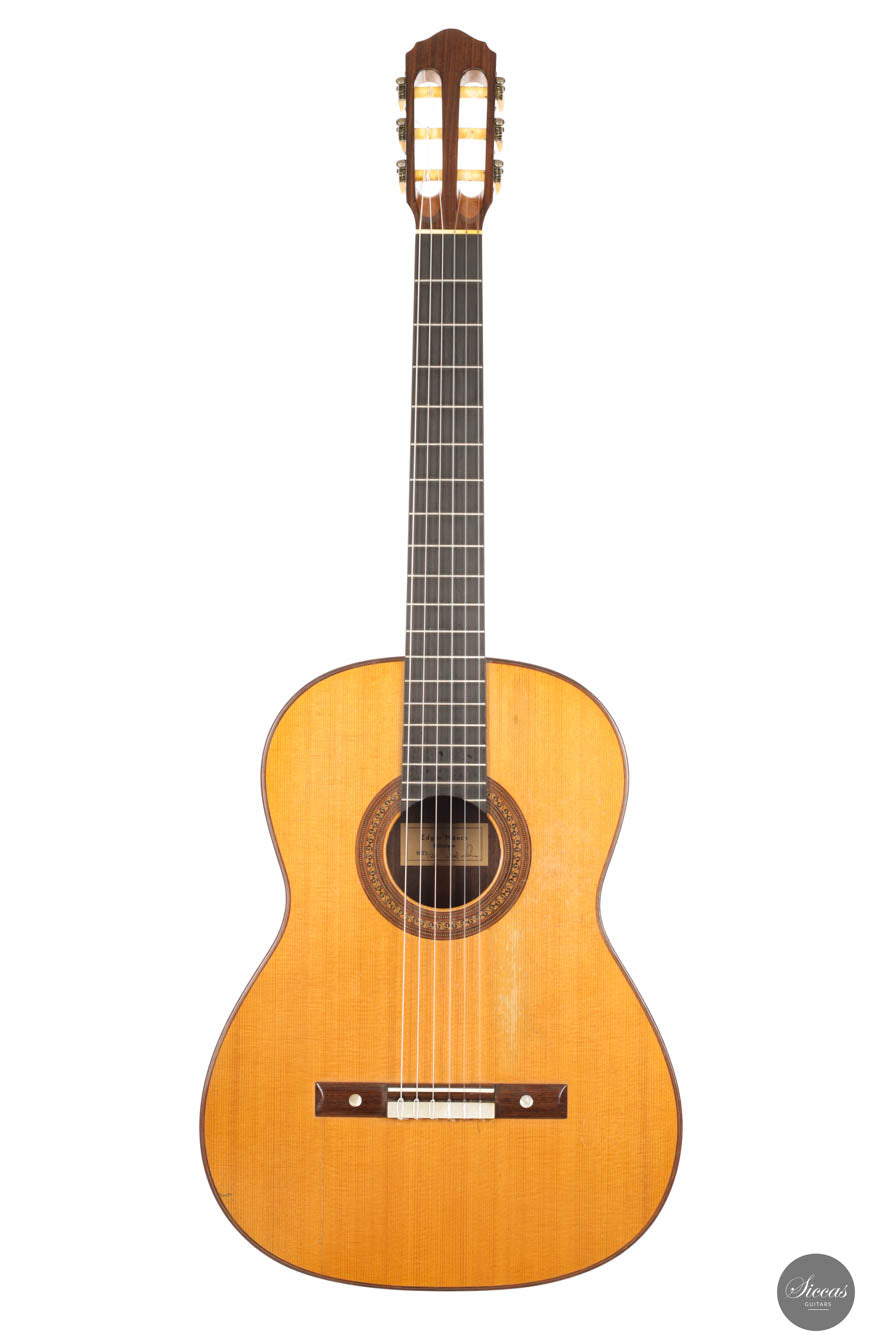
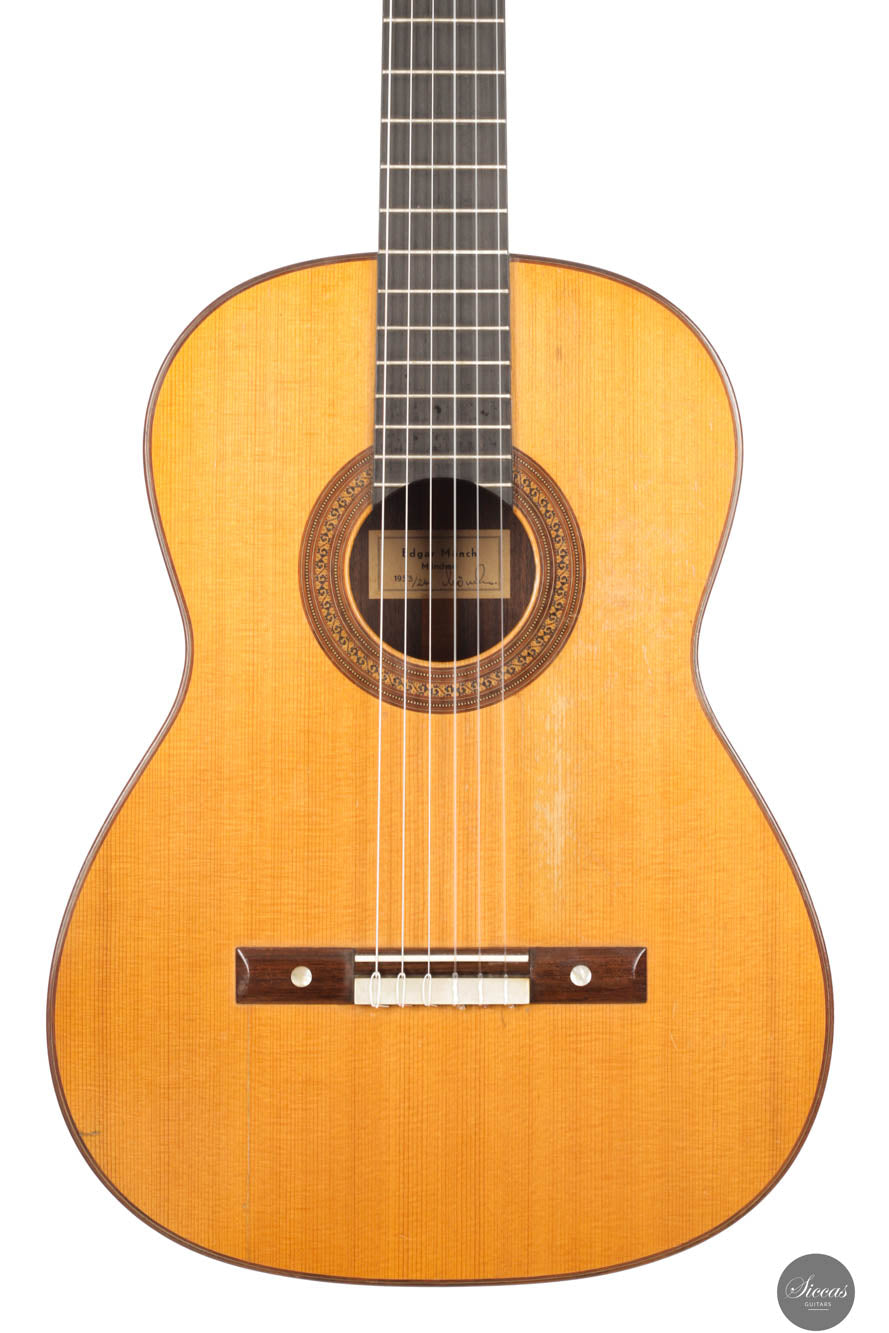



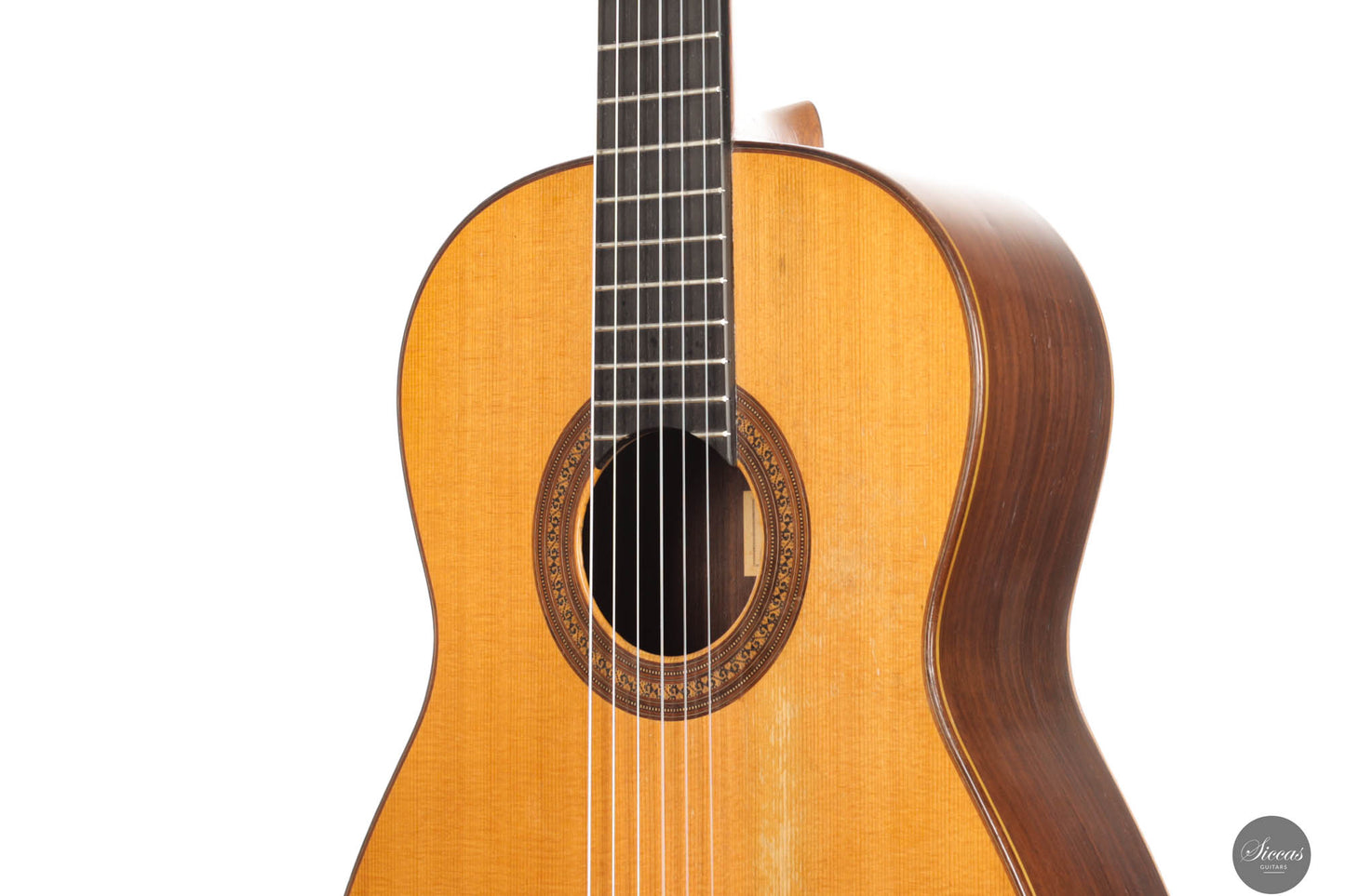



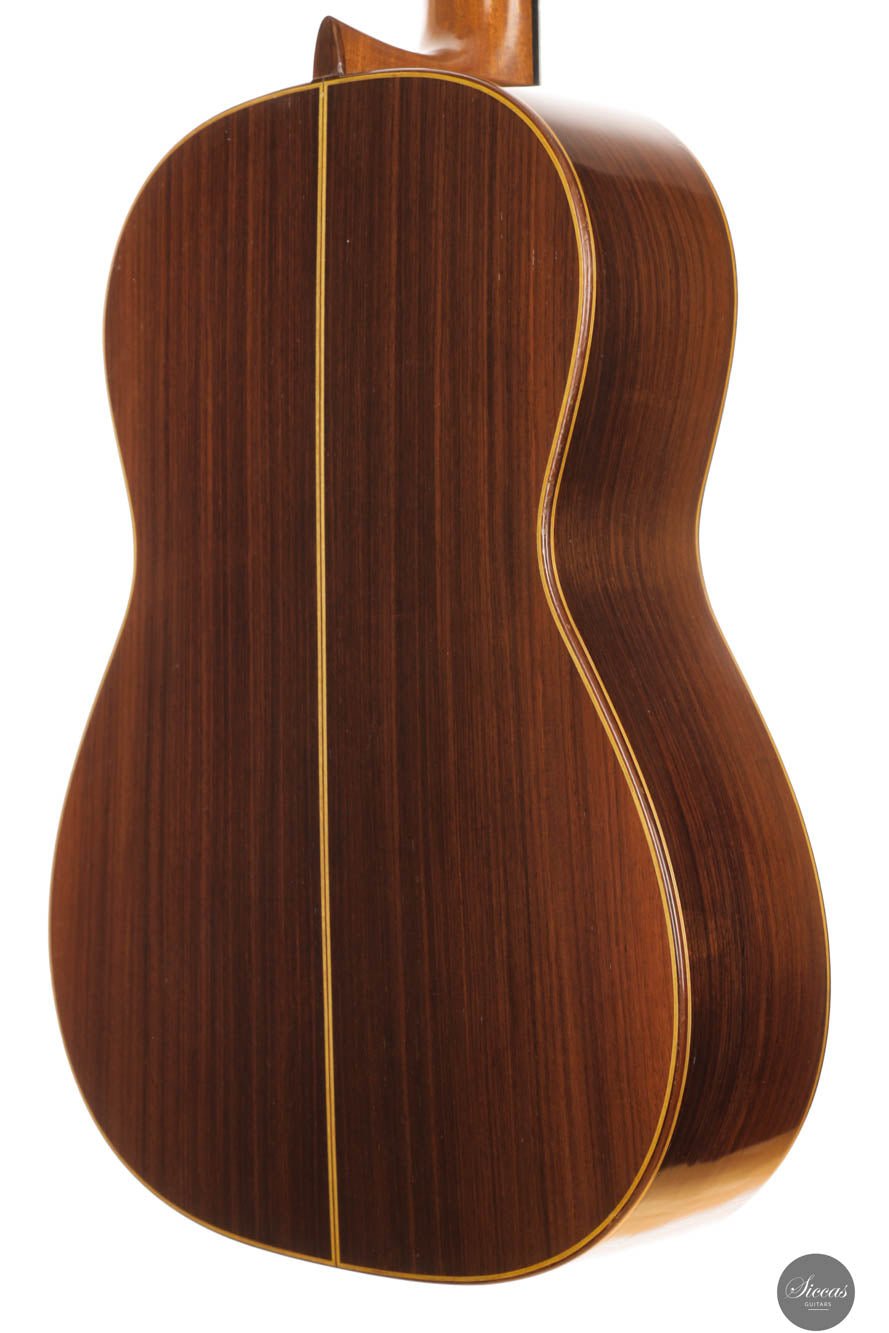
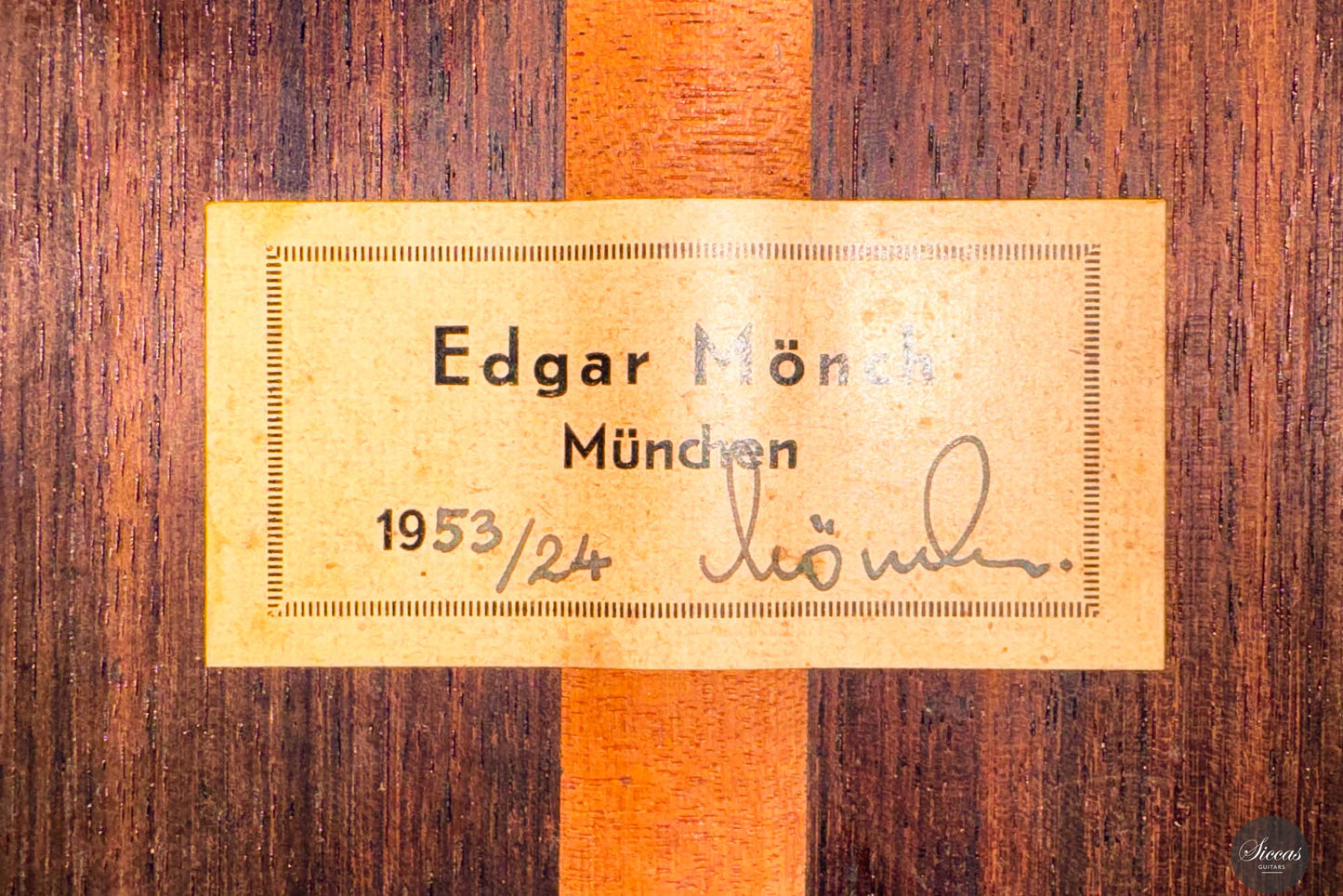
Video overview




































































